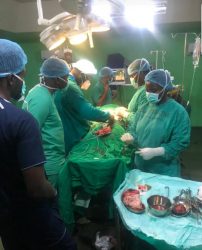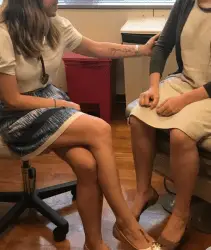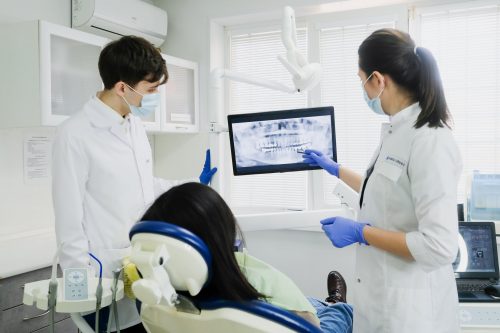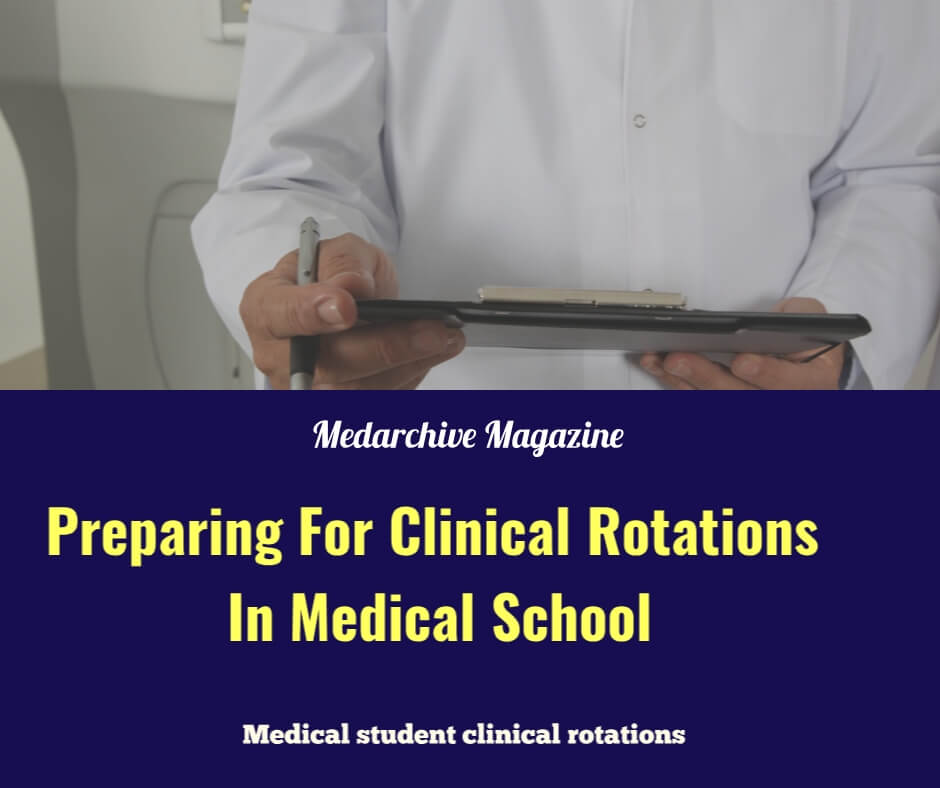So you have completed your preclinical years, and have aced your first professional exam in medical school?
Congratulations!
At least you have crossed the “rate-limiting step” for medical students as it is called.
And now you are headed for your last few years in medical school which comprises mainly of the clinical rotations for medical students also known as the medical student rotations, clinical clerkship, clinical posting, or medical rotations for short.
Having done over 80 weeks of clinical rotations in medical school, I have figured out that there is a lot I could have done better during my medical student rotations.
Also, there are a lot of things I should have known assuming I had a proper orientation before I jumped into my first medical rotations in medical school.
However, there is absolutely nothing to regret since I learned my lessons on time and before it was too late.
So to help you avoid unnecessary mistakes as you start your medical rotations, I have shared a comprehensive guide on this post that will help you to walk through your clinical classes in medical school effortlessly irrespective of your country or medical school.
This post will also be helpful to all nursing students who are starting their own clinical rotations for nursing students and all other medical students studying the rest of the medical related courses that involve clinical rotations.
In this post, we will be looking at an overview of what clinical rotations are, what it entails, and a guide on how to go through your medical rotations like a boss.
Table of Contents
- What Are Clinical Rotations For Medical Students?
- Why Are Clinical Rotations Important?
- How To Prepare For Clinical Rotations
- How To Excel In Clinical Rotations
- Clinical Rotations For International Medical Students
- Final Words on Medical Student Clinical Rotations

What Are Clinical Rotations For Medical Students?

Clinical rotations are the time medical students, nursing students, or students of other medical-related courses spend in the clinics and wards of a teaching hospital under the supervision of a senior doctor called a consultant, the resident doctors, and other senior colleagues.
The aim of clinical rotations for medical students’ training is that helps the students to acquire necessary clinical skills of cross-specialty relevance based on the theories learned from the lecture halls.
It is during medical student rotations that students come in contact with patients, and see firsthand how different diseases are approached and managed to minimize harm and ultimately save the life of the patient.
At What Year Do You Do Clinical Rotations?
During your first 2 years of medical school, you are mainly focused on learning the theories in medicine this period is known as the preclinical in medical school.
In the preclinical classes, you take all the courses that prepare you for clinical reasoning.
However, clinical rotations commence from your 3rd-year medical school through your final year, and this is known as the clinical classes in medical school.
During the preclinical years of medical school, students take courses like human anatomy, physiology, medical biochemistry, pathology, and pharmacology.
In the United States, this is crowned by the USMLE Step 1 and 2.
However, from the clinical classes, medical students take courses like medicine and surgery, obstetrics and gynecology, pediatrics, and courses in the other internal medicine subspecialties like dermatology and family medicine.
Types of Clinical Rotations
Due to the fact that there are many specialties in medicine and surgery, there are as well many medical rotations for medical students to pass through.
However, medical students have just an average of 2 years in medical school to complete their clinical rotations.
So it is virtually impossible for every medical student to pass through all the specialties in medicine and surgery for medical rotations.
For this reason, clinical rotations for medical students are divided into two main types:
- The core clinical rotations and
- The Elective clinical rotations
What are the core clinical rotations for medical students?
The core clinical rotations are those clinical clerkship programs that are required in complete fulfillment of the degree in Medicine and Surgery.
The core clinical rotations vary from medical school to medical school.
In some medical schools, there are some departments in medicine and surgery that they consider most important based on their curriculum, and all medical students in their training program must pass through all these rotations before they can graduate as doctors.
The Common core rotations in medical school include:
- Surgery rotation: A medical student can be posted to do his/her clinical clerkship in a unit within any of the specialties of surgery. The surgery specialties deal with the diagnosis and treatment of diseases, injuries, or trauma through operations.
- Family Medicine rotation: Family medicine also known as General Medicine in some places refers to the branch of medicine that deals with the diagnoses and treatment of diseases affecting patients of all ages; pediatrics, adult, and the elderly. This however does not include specific care for patients who have conditions affecting a known system.
- Internal Medicine rotation: Internal medicine rotations could be in any of the internal medicine specialties. The aim is to prevent, diagnose and treat patients with diseases affecting various systems.
- Pediatrics rotation: Pediatrics is just like internal medicine. But in this case, it involves patients aged 17 years and below.
- Obstetrics and Gynecology rotation: Obstetrics involves the prevention, diagnosis, and treatment of diseases affecting pregnant women, and all forms of care needed to help them carry their babies to term and deliver safely. Gynecology involves the diagnosis and treatment of diseases affecting adult women. Obstetrics and Gynecology include women’s health and wellness, prenatal, natal, and postnatal care, labor, and delivery.
- Psychiatry rotations: This focuses on the prevention, diagnosis, and treatment of mental, behavioral, and emotional disorders.
Elective Rotations
These are the optional clinical rotations as designated by the medical school.
The components of the elective clinical rotations are all other specialties of medicine and surgery which a medical student can be randomly posted into.
It is also possible for medical students to choose a clinical clerkship based on their own interests and preference.
Common elective rotations in medical school include:
- Cardiology rotation
- Radiology rotation
- Emergency medicine rotation
- Pathology rotation
- Physical medicine and rehabilitation rotation
- Ophthalmology rotation
- Allergy and Immunology rotation
- Infections disease rotation
- Gastroenterology rotation
- Endocrinology rotation
- Pulmonology rotation
- Orthopedics rotation
- Nephrology rotation
- Dermatology rotation
- Plastic Surgery Rotation
- Intensive Care Unit rotation
- Rheumatology rotation
- Neurosurgery
- Urology
- General Surgery
Audition Rotation
Audition rotations are not really part of the usual curriculum for most medical schools.
An audition rotation is a residency program interview that medical students undergo within the final year of medical school to help them get a strong recommendation letter for residency.
An audition takes 2 to 4 weeks to complete, and most medical students in the US usually start their auditioning application process right from their 2nd and 3rd years to increase their chances of securing a spot.
The specialties that most medical students go for during their audition rotations are usually those ones they are most likely to specialize in during residency.
Also, Read; Medical Student Malpractice Insurance: What you must know
How Long Are Clinical Rotations For Medical Students?
There are over 80 weeks of clinical clerkship for medical students.
Usually, the duration of the core clinical rotations is longer than the elective clinical rotations.
Students are required to complete at least 6 to 14 weeks of the core clinical rotations.
However, the elective clinical rotations last for about 3 to 4 weeks.
Furthermore, medical students spend an average of 4 to 8 hours daily during clinical rotations.
This time is spent with the senior doctors in the clinic, surgical theater, or in the wards where they attend to patients.
It is good to note that this duration varies from school to school.
In my experience, the table below shows the minimum number of weeks students posted in each department for clinical rotations spend:
| Department | Duration of Medical Rotations |
|---|---|
| Anesthesiology | 3 weeks |
| Emergency Medicine | 3 weeks |
| Family Medicine | 3 weeks |
| Radiology | 3 weeks |
| Psychiatry | 3 weeks |
| Pediatrics | 14 weeks |
| Obstetrics and Gynecology | 14 weeks |
| Neurology | 6 weeks |
| General Surgery | 3 weeks |
| Orthopedic Surgery | 3 weeks |
| Plastic Surgery | 3 weeks |
| Cardiology | 6 weeks |
| Neurosurgery | 3 weeks |
| Pediatrics Surgery | 3 weeks |
| Endocrinology | 6 weeks |
| Urology | 3 weeks |
| Rheumatology | 5 weeks |
| Plastic surgery | 3 weeks |
| Neurology | 6 weeks |
| Nephrology | 6 weeks |
| Pathology | 6 weeks |
| Physical Medicine and Rehabilitation | 4 weeks |
What do clinical rotations teach you in medical school?
During clinical rotations, medical students acquire various skills that are useful in the management of patients.
The skills acquired by medical students during clinical rotations include;
- History taking
- Physical examination
- Laboratory investigations
- Diagnoses and
- Treatment
- History Taking: This is also referred to as clerking and it involves asking specific questions about them, their illness, and how it affects them. It varies depending on the specialty. An adequate medical history comprises:
- The Biodata of the patient: This includes the patient’s name, age, sex, occupation, marital status, address, religion, tribe, and informant.
- Patient’s Chief Complaint(s): This is also known as the presenting complaint(s). And it tries to answer the question; of what brought the patient to the hospital.
- History of presenting complaint: This part tries to evaluate all the patient’s complaints and reasons for being in the hospital, and tries to find out the causes, course, complications, and care received prior to coming to the hospital.
- Past Medical and Surgical history of the patient: This tries to probe for all the illnesses the patient has suffered in the past, chronic illnesses like diabetes, hypertension, etc. Also, history of previous surgeries and blood transfusions.
- Drug and allergy history: This is an inquiry into the patient’s past use of drugs and how it adversely affected them. Also, any history of allergies to any substance or food.
- Family and Social History: This has two parts; the family history which covers the important medical history of the patient’s first-class relatives, especially from the maternal side. And then the Social history that covers the patient’s social life like substance use.
- Review of systems: This section tries to rule in or rule out any other systemic involvement of the patient’s illness.
- Summary: This section outlines all the important findings from history both the positives and negatives.

- Physical Examination: This comprises the general and systemic examinations. The general examination gives an overview of the overall health state of the patient while the systemic examination gives a detailed overview of the functionality of each system. In physical examination, the clinician attempts to elicit signs of disease processes going on in the patient.
- Laboratory Investigations: This includes all the different tests and scans carried out on the patient to find evidence of diseases in the patient.
- Diagnoses and Treatment: This is the last phase of clinical training where medical students are taught how to analyze and tie up the information gotten from a patient’s history, the physical examination findings, and laboratory investigations to make a definite diagnosis. The knowledge of this diagnosis will be used in the adequate treatment and management of this patient.
Why Are Clinical Rotations Important?
It is obvious that some medical students wonder why they should always go for clinical rotations.
Some do not go for their rounds because of how stressful it is.
But the fact remains that there is no way you can be a good doctor without an apprenticeship.
An apprenticeship is deep-rooted in medical student clinical rotations.
During clinical rotations, you are posted under a consultant and other senior doctors who are responsible for giving you the adequate training you need for that particular program.
Below are some of the reasons why clinical rotations are important:
- Requirement for a complete degree: Clinical rotations are carried out in partial fulfillment of the medical degree you acquire in the university. At the start of clinical clerkship, medical students are handed over a logbook which they are meant to use to sign daily attendance to the hospital and procedures which they observed, assisted, or performed under the guidance of a senior doctor in their unit. In most medical schools, if this logbook is not signed up to the minimum requirement, the medical student is said not to have completed the posting.
- Requirement for writing your medical exam: In some medical schools, the daily attendance signed in the logbooks is a requirement to qualify for the medical school exam in that class you are doing the medical rotations for. In most cases, if your attendance is not up to 75%, you will be disqualified for writing the exam following that clinical posting.
- Increases your relationship with older colleagues and doctors: In the course of your clinical postings, you get a chance to be with senior doctors and consultants in your unit. This is a smart time to show your competence and build your friendship and trust in the eyes of your senior colleagues. This relationship can do you favor during your medical exam if, by chance, you meet the same doctor as one of your examiners. Due to their influence and knowledge of you as a hard worker, they could do you a favor and pardon your mistakes that could have led to your failure in the exams.
- You Acquire skills of clinical relevance: The most important reason for medical postings is that it helps you acquire relevant skills that will help you stand out in clinical practice. Whether you want to become a surgeon or a clinician, the weeks you spend during your clinical postings are crucial to the development of the handy skills you need as a doctor.
- Helps you in choosing a specialty: Studies have shown that most medical students end up specializing in that specialty in which they enjoyed the clinical posting the most. It is during clinical rotations that you realize your strengths and weaknesses in different areas of medical practice. And this realization will help you rule out and rule in the specialties that you are most comfortable with.
- Obtain a residency position: Medical students usually get medical school personal statements while preparing to apply for a residency program from one of the specialties they were in during their clinical postings. So if you do well in a particular posting, you will definitely get a strong letter of recommendation and a good medical school personal statement. This will help you in filling for a residency position fast.

How To Prepare For Clinical Rotations
Preparing for clinical rotations depends on two factors; if you are going for a medical posting outside your school and if you will remain in your school for the clinical posting.
Usually, if you are doing your clinical posting within your school, the application process is smooth and straightforward since it is the responsibility of the school administration to forward your documents from your dean in the preclinical classes to the dean of the clinical classes.
In most schools, the medical students usually don’t come between this process, all they need is to prepare and come for clinical posting once they are posted to different units.
However, if you are going for a clinical rotation outside your school, then you will be doing all the ‘run-around” for the processing of your documents to be faster.
It is of important note that most schools require that their students do all the core clinical postings under them, while they have a choice to do the elective clinical postings either in the school or in any other school they feel like.
Application requirements for clinical rotations in the US
If you are looking to go for an elective clinical posting in a medical school in the US that is outside your own school, you will have to get all the application requirements ready.
Some of these requirements will come from the office of your dean, departmental head, unit heads, and sometimes from the school itself.
List of Documents to Process If You are Going for an Away Clinical Rotation:
- Your Resume
- USMLE Step 1 &2 result
- Medical School Personal Statement
- Letter of intent
- Transcripts
- Letter of good standing with medical school (For people applying for programs outside their school)
- Malpractice insurance
- Dean’s letter
- Immunization records
- HIPAA awareness training
- Criminal background check
- Urine drug screening report
What Do I Need For Medical Student Rotations?
Here we are talking of the things you must have during clinical rotations as a student for your own comfort during the postings.
Also, some of them are a requirement by the school while some are just necessities every student must have during their postings.
We already have a separate post of the things medical students need in medical school starting from their first year to their final year.
But this list will be focusing mainly on what such a student will need during the clinical rotations phase.
15% Off for Medical Students – Stethoscopes, Sphygmomanometers, Reflex Hammers, Tuning Forks and more.List of things medical students must have during clinical rotations:
- The posting log books: This is a requirement by the school and it is where the medical students sign their daily attendance and procedures they took part in during posting.
- A convenient scrub
- Comfy shoes and theater footwear
- White lab coats
- Study notes
- Pen for taking notes
- A compartmentalized backpack
- A smartphone with relevant clinical medical apps
- A portable power bank with a USB cord
- Diagnostic Set
- Stethoscope
- Tendon hammer
- Pen torch
- Spatula
- Face masks
- Two meter rules
- Sphygmomanometer
- A Smart wristwatch
How To Excel In Clinical Rotations
If you are preparing for your clinical rotations, and you are looking for the best way to succeed in clinical rotations as a medical student, then you must listen to the advice below.
This advice is from someone who has done over 90 weeks of clinical rotations and is currently in the final year of medical school.
Below is a list of how to excel in clinical rotations:
- Always be on time: Being on time for your clinical postings will help you have enough time to prepare ahead of meeting your consultants and reading up on what you are expected to do for the day.
- Know your role: Always know what is expected of you at every stage of your clinical rotations as a medical student. Do not go beyond what you are expected to do and do not do less than you are expected. This way you have issues with other persons doing their clinical rotations in other medical-related courses.
- Be brave: Always be willing to get out of your way to try new things, and take part in procedures as they will help you acquire skills and be more confident. Don’t be among those medical students who always hide behind others whenever it is time for performing medical procedures.
- Clerk patients as often as possible: Clinical clerkship involves the art of history taking, physical examination, investigations, and diagnosis. In the early days of your clinical rotations, you will find yourself struggling to fit in, but once you keep clerking and presenting cases to your seniors, you will keep being corrected and with time you will master the art.
- Always know the patients posted in your unit: It is always good to know the patients posted under the consultant in your unit. Clerk these patients and follow up with their management process. This way, you will always remember how to manage similar cases whenever you meet them in the future.
- Start the daily progress note: As part of the early morning routine during clinical clerkship, medical students are expected to monitor the daily progress of their patients. This includes monitoring their vital signs, asking for their new complaints, and for the resolution of their old complaints. This will help you follow the course of their history.
- Be respectful to everyone: Always respect everyone you see in the clinic starting from your unit head, the residents, interns, your patients, fellow medical students, and even other health professionals like the nurses and physiotherapists. Maintaining a good relationship with everyone can open doors for you in the future.
- Be organized: Always plan your activities for the day beforehand. Know what each day is for during medical rotations and prepare as required. Carry your scrubs and surgery footwear on surgery days and your lab coats during clinic days and ward rounds.
- Always dress professionally: Always dress corporately during your medical rotations. There is no need to try to draw unnecessary attention to yourself by wearing chains, obvious tattoos, and clothes with off colors. These could put you into unnecessary trouble.
Also, Read; Medical Student Attire: 5 Tips to Dress Professionally
- Learn and practice good communication: The best way to practice good communication during the medical student clinical rotations is to keep clerking patients and presenting them to your senior colleagues and consultants.
- Be a team player: By team player, we simply mean always taking part in the activities of the unit and respecting everyone.
- Don’t forget to balance work and life: Always find time for a break in the midst of all the hassles in clinical rotations.
- Ask questions: We cannot over-emphasize the importance of asking questions during clinical rotations for medical students. When asked what her major concerns are for students posted under her unit for clinical clerkship, a consultant neurologist in a US medical school said;
- “My major concerns are those students who are always looking shy and aloof during their medical rotations. You never know if they are being silent because they already know it, or if they are just being timid and need help. These students burden me the most. Even if they claim to know it all, that is very dangerous because learning never stops even after you bag your MD degree. It’s a continuous process”.
One of the major challenges faced by some students doing clinical rotations is that many of them complain that they do not know the right questions to ask.
This is so easy to relate to especially when you have not put in a considerable amount of hours into studying.
The fact is that as you observe more and read new things, you will know the right questions to ask.
However, we have compiled a list of the common types of questions that you should always ask during your clinical rotations.
Common Questions To Ask During Clinical Rotations Include:
- What’s the patient’s diagnosis?
- Why are we using this medication instead of the other alternative?
- What are the other indications for this procedure?
- How do I manage a patient like this?
- Why are we discharging the patient? (For a patient who still has obvious symptoms) etc.
Also, Read; How To Wash Scrubs for the first time
Clinical Rotations For International Medical Students
The average duration of the clinical rotations for international students in most medical schools is 4 weeks.
If you are an international student planning to do your clinical rotations in the US and the UK, you should make up your mind on time and start planning for this right from your 3rd year in medical school (Or first year in the clinical classes).
In choosing clinical rotations elective, always go for an elective based on the specialty you want to go for in your residency program.
Common electives that most medical students like going for in the United States include:
- Anesthesiology
- Radiology
- Clinical Neuroscience
- Pathology
- Rheumatology
- Emergency Medicine
- Obstetrics and Gynecology
- Pediatrics subspecialties
- Surgery subspecialties
- Medicine subspecialties
Once you have decided which rotations you want to go for, the next important step is to start processing your documents as listed below:
- Your Resume
- USMLE Steps 1 &2 result or your first (2nd MBBS) and second professional medical exams(3rd MBBS).
- Medical School Personal Statement
- Letter of intent
- Transcripts
- Letter of good standing with medical school (For people applying for programs outside their school)
- Malpractice insurance
- Dean’s letter
- Immunization records
- HIPAA awareness training
- Criminal background check
- Urine drug screening report
These documents will be evaluated by your mentor in medical school who is usually assigned by the faculty of medicine before they are forwarded to the host school.
For some schools, your school will help you in processing and forwarding these documents to the host school where you will be doing your elective clinical posting.
The host school is usually a school that has a formal or written affiliation with your university.
Tuition and Fees
Most international medical schools will not charge any students for whom they host tuition and related fees.
However, such students must have paid their tuition for that academic session in their current school.
But all other expenses like cost, feeding, and accommodation are handled by the student.
At the end of your international clinical rotations, your host school will write a report and sign your logbooks based on your attendance and participation in the activities in the school and send them back to your school.
This report and logbook will form part of your transcript after your graduation.
You Will Also Like; Do You Get Paid During Clinical Rotations?
Final Words on Medical Student Clinical Rotations
Clinical rotations for medical students is that period during medical school training where students learn the basic skills of clinical clerkship that are required for holistic management of patients.
During clinical rotations, medical students are posted under a consultant and residents in a unit. It is the duty of the consultant and the resident doctors to teach the students all these necessary skills they need to acquire from that unit.
As a medical student preparing for clinical rotations, you have seen the important things you must do, what you will learn, and the things you must have whether you are going for an away clinical rotation (outside your school), or if you will be doing your postings inside your school.
Whichever it is, always make effort to get the best out of your clinical postings, it is what will make you a good doctor.
I wish you the best in your medical career journey.
Other Posts You May Like:





The posting log books. Do you have a template of this? I need and example. Thank you
Hi Arlene, you can request this template from your medical school. It varies from school to school depending on their Academic Calendar. Thanks for reading through.